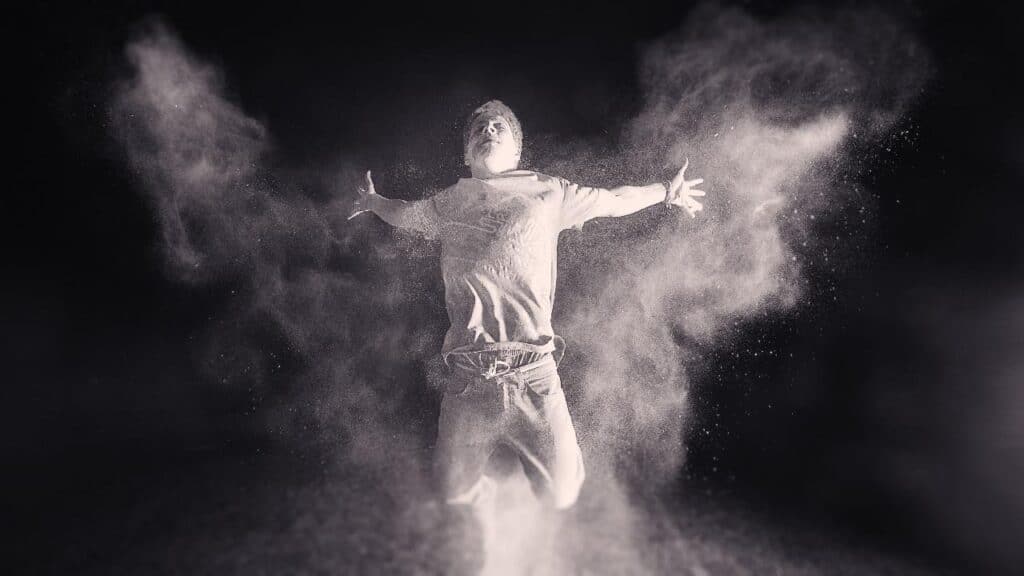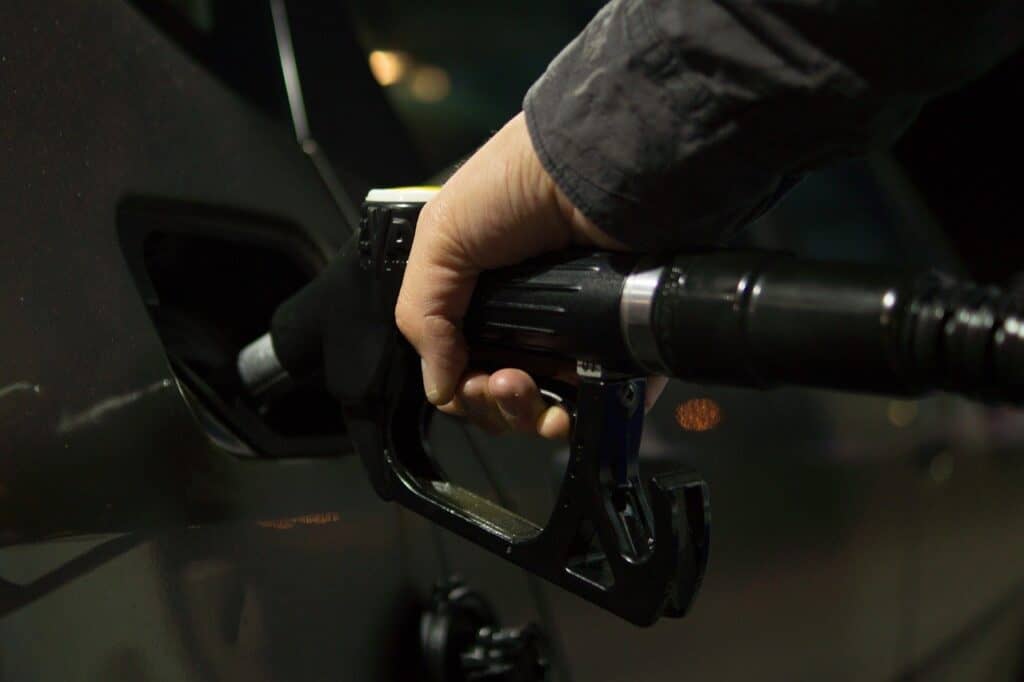Dust is pesky and it gets into everything, everywhere. It can be made up of absolutely anything too, though ordinary household dust is mainly dead skin (gross). The big question, though, is whether or not dust is harmful to us and if it causes a fire hazard in our homes and workplaces? Given how common dust is, it’s probably something we all need to know.
Most types of dust are flammable, though it will depend on the type of dust. Due to the extremely high ratio between the surface area of the particles and their total volume (because dust particles are so small), it is often very easy to get dust to burn, even when the material is not otherwise very flammable.
Obviously, dust can be made up of a variety of different things and that can affect its flammability. Let’s take a closer look at dust and the accompanying fire hazards.
Your # 1 priority is keeping your family safe. As a firefighter, I recommend everyone has updated smoke detectors that don’t require battery changes, like these ones from Kidde, a fire extinguisher, like this one from Amerex, and a fire escape ladder if you have bedrooms above the first floor, I recommend this one from Hausse.
Also read: What Makes Something Flammable?
Why Is Dust Flammable?

Dust is, usually, flammable because it changes the physical property of a substance.
If you take a block of iron, for example, which is 12” x 12” x 12”, then it has a volume of 1,728 cubic inches and a surface area of 864 cubic inches.
The surface area is roughly half the volume of the block of iron.
However, if you were to grind this down into dust with particle sizes of approx. 100 microns per side (that is about 0.000003937 inches) then the total volume of the iron won’t change.
But the surface area will increase by about 90 million times!
This means that when you heat the dust, there’s a lot more of the surface exposed and this makes it very easy to heat the volume of the dust up to the point where it will catch fire.
It is this change in surface area to volume that makes dust highly flammable and means that most materials, even ones like iron which are not at all flammable in ordinary circumstances, can suddenly become highly combustible.
Also read: Is Milk Flammable? Milk Explosions?
What Makes It Explosive?
Because of the tiny size of dust particles, even substances that are heavier than air can be bounced around by air molecules, and thus, dust tends to form clouds in the air that will, eventually, if the substance is heavy enough, fall to earth but potentially not for a long time.
This means that dust is explosive because the action of burning dust, tends to be self-propagating, that is the heat and light (fire) released from one burning piece of dust is enough to make the next piece burn too, which in turn, releases enough energy to burn the next.
This reaction happens very quickly, in fact, to the naked eye it would appear near-instant, resulting in a large fire in the air, which then increases the pressure of the air, and as air pushes outward rapidly, we see an “explosion”.
Take a look at this dust explosion demo:
Dust has a high surface area that can be heated much quicker and when it is suspended in the air, it has a large amount of oxygen to fuel ratio. These two things are the primary reasons dust behaves so differently and can even explode.
Also read: Is Flour Flammable? Can it Explode?
Are These Explosions Dangerous?
Dust explosions can be very dangerous, indeed.
The worst, known, dust explosion in history took place at the Benxi Colliery in Liaoning, which was then in Manchukuo but is now in the People’s Republic of China.
The mine had been occupied along with China during the Second World War by the Japanese and Chinese workers were forced to toil in it all day long with little or no rest.
The Russians who investigated the disaster described conditions as “slave labor”.
The mine was crammed full on April 26, 1942, when a dust explosion tore through it.
It killed over 1,500 people. 31 of whom were Japanese, the rest were all Chinese laborers.
At the time it was the worst ever accident in the world in a coal mine and the second-worst industrial accident of all time.
Also read: Is Windex (Glass Cleaner) Flammable?
Can Silos Explode?
Grain silos generate enormous amounts of corn dust and yes, just like coal dust is flammable, so is corn dust.
In September 1919, in Kansas City, Missouri, a grain silo at the terminal exploded and it is believed to have killed 14 men and injured 10 others.
You can see in this video how the grain dust spreads fire so rapidly:
Can Sugar Dust Explode?
Yes, sugar dust is also explosive and in a far more recent incident in Port Wentworth, Georgia in February 2008, an explosion ripped through the Imperial Sugar factory and killed 14 people, injuring 42 more.
Watch here:
What About Cement Dust?
No, cement dust is not flammable as long as it is kept in its pure form, and this doesn’t pose a risk of explosion.
Even though it has a high surface area like other types of dust, the concrete dust generally will not ignite.
Cotton Dust?
Cotton dust is considered highly explosive though there has never been a major accident involving a cotton dust explosion.
Just a matter of time I suppose.
Also read: At What Temperature Does Cotton Burn? Is it Flammable?
Coffee Dust?
Coffee dust is not only combustible and an explosion hazard, but it’s also a potential irritant for the eyes, lungs, etc.
That means facilities that specialize in grinding coffee are required to fit industrial vacuum systems that remove 99.995% of the coffee dust from the air.
Also read: Is Non-Dairy Creamer Flammable? Can it Explode?
Iron Dust?
Yes, as we saw in our initial example, iron dust is explosive and while solid iron won’t burn, iron dust will burn very quickly to form iron oxide.
Is Petroleum Coke A Combustible Dust?
Yes, petroleum coke is combustible dust in the same way that coal dust is combustible and a serious explosion risk.
All operations where handling petroleum coke is part of the process are strictly regulated to try and prevent the formation of dust clouds.
What About Household Dust?
Household dust could, technically, become explosive, but it would require a very specific and unusual set of circumstances to make it dry enough to explode.
Because it consists mainly of dead skin cells, household dust is quite moist and unlikely to burn in an explosive manner.
However, it’s worth noting that this doesn’t mean that household dust is “safe”, inhaling it can lead to all sorts of health problems, and a wise person vacuums or otherwise removes the excess dust from their home on a regular basis.
What Is Not A Combustible Dust?
There are materials that are not combustible in the form of dust, these mainly include chemicals that have already fully combusted and thus cannot be burned further.
In addition to the example of cement above, you’ll find that limestone, fly ash, silica, sand, etc. are materials that simply won’t burn in dust form.
“If it didn’t start out as a rock, it can explode.”
FMGlobal
How Can We Prevent Dust Explosions?
The good news is that while dust is often combustible there are things you can do, particularly at work, to reduce the odds of a dust explosion:
- Assume that any dust is combustible unless you know that it is not. As most materials are combustible and potentially explosive in dust form, it’s best to err on the side of caution. Serious accidents have occurred with substances like plastic dust, something most of us wouldn’t know was flammable at first glance.
- Make sure that there is sufficient access to all areas of the plant. Dust can easily accumulate in places you can’t reach to clean.
- Inspect for dust on a regular basis. If there’s more than about 1/32nd of an inch of dust (that is about the same thickness as a paper clip) then you have a potential problem, and it needs to be removed.
- Clean regularly. Dust won’t remove itself. You need to ensure that the workplace is cleaned regularly to prevent dust from building up. Cleaning should also be done with removing dust in mind rather than just displacing it.
- Large dust collectors live outside. Dust is much less likely to explode if it leaks from a dust collector in the outdoors than inside.
- Ensure your electrical gear and wiring are up to standard. In any dusty environment, poorly performing electrical equipment is a spark hazard that can lead to an explosion.
- Use vacuum cleaners rated for dust collection in hazardous places. If large amounts of dust are involved a standard household Hoover won’t make the grade for collecting it safely.
- Make sure there are no naked flames. Don’t allow smoking in the building. Make sure static is not a problem.
- Maintain your equipment. When equipment grinds to a halt, it can spark and set off your dust.
- Train people to recognize potential threats. If you work with dust, everyone should be able to recognize a potential risk and have the authority to either deal with it or report it and expect it to be dealt with.
Sources
1, 2, 3, 4, 5, 6, 7, 8, 9, 10, 11, 12, 13
Related Articles
Is Baby Powder Flammable? It Depends…
Is Chalk Flammable? It Depends…

